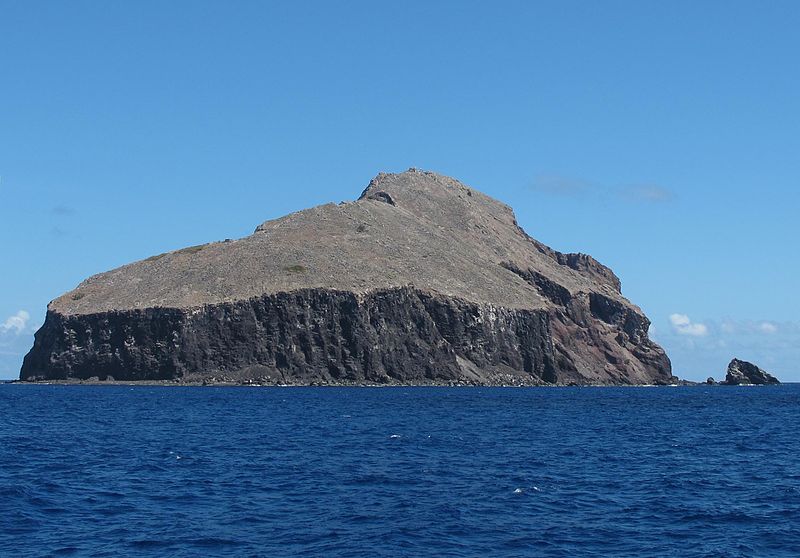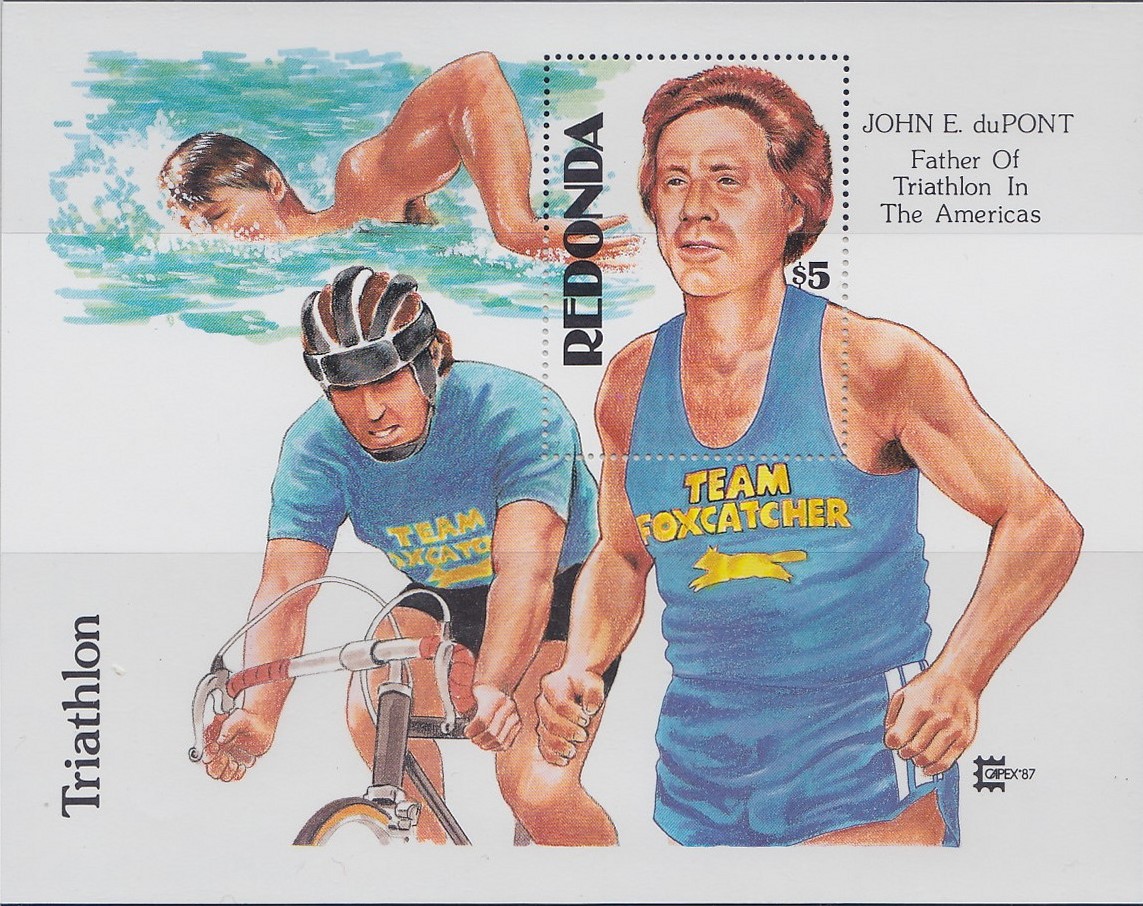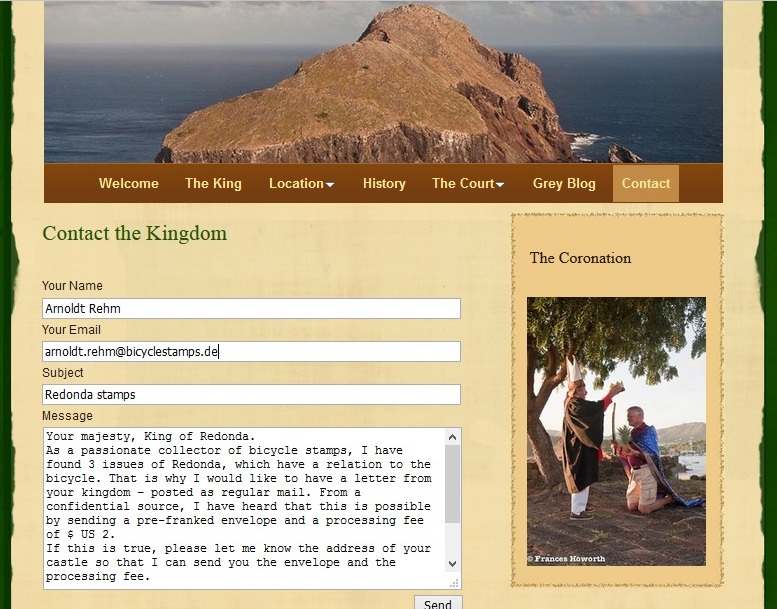Michel quo vadis - Redonda
Never heard of Redonda? No - you are not alone: John E. du Pont also not. Redonda is neither a bush, nor a car or cheese brand. It is an island in the Caribbean - politically belonging to Antigua and Barbuda.
It is of volcanic origin and this may be is the reason why it appeared so spontaneously in the Michel catalog (first issues in 1979). Believe it or not - there is a real post office on the island:
But who writes letters there? The island has been uninhabited since World War I. Three of the 350 stamps cataloged by Michel for this rock state are bicycle related. This one
(RE17889)
shows John E. du Pont, in the three triathlon disciplines. The millionaire and well-known philatelist (former owner of the British Guiana one cent magenta) promoted this sport and paid $ US 10,000 to be depicted on the stamp. "Where the hell is Redonda?" he said at the sight of the sheet and was probably a bit disappointed not to find Redonda in the Scott catalog. It is not reported whether it has reconciled him, that this 1 mile long and 0.5 mile wide stone heap is listed in the Michel catalog. By the way - the Scott catalog does not list Redonda until today.
Since 1992 the island seems to be sunk again - at least there are no new Michel quotations. However I can reassure: the island still exists. It is currently ruled by your Highness King Michael the Gray (not King Michel). He is the successor of King Bob, who died in 2009. Unfortunately my request to get a genuine used letter,
remained unanswered by King Michael. Another evidence that there is no mail service on Redonda.
References/External links:
Wikipedia: Redonda
Wikipedia: John Eleuthère du Pont
Stamp Community Forum “Redonda Disney Stamps” with the above photo of the Redonda Post Office
Photos of Redonda by Tony Glaser – one showing the Redonda Post Office in the year 1984
The original report by Anthony E. Teidemann was published in BS20A_11 in 1996 and is reproduced bellow:





